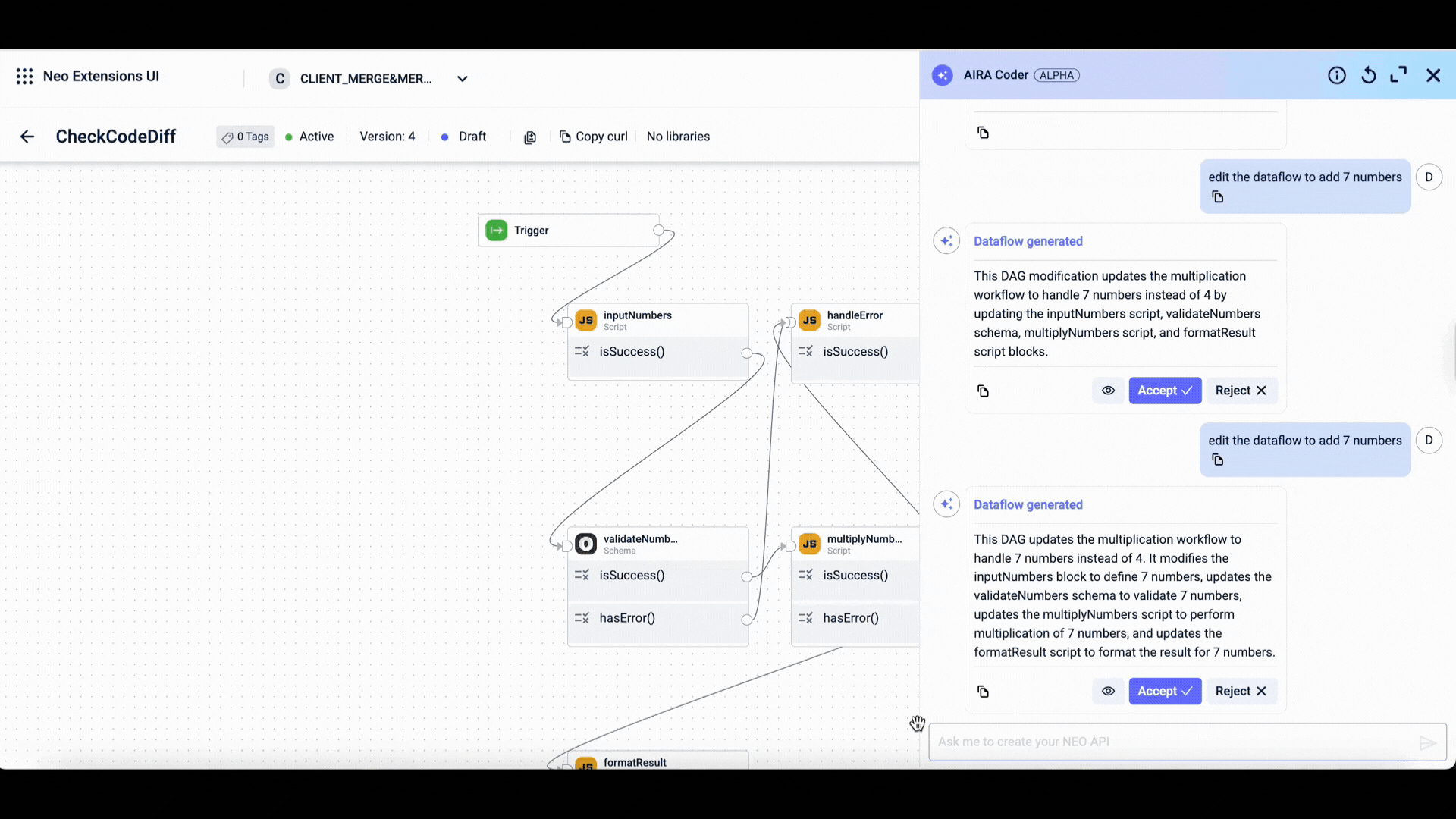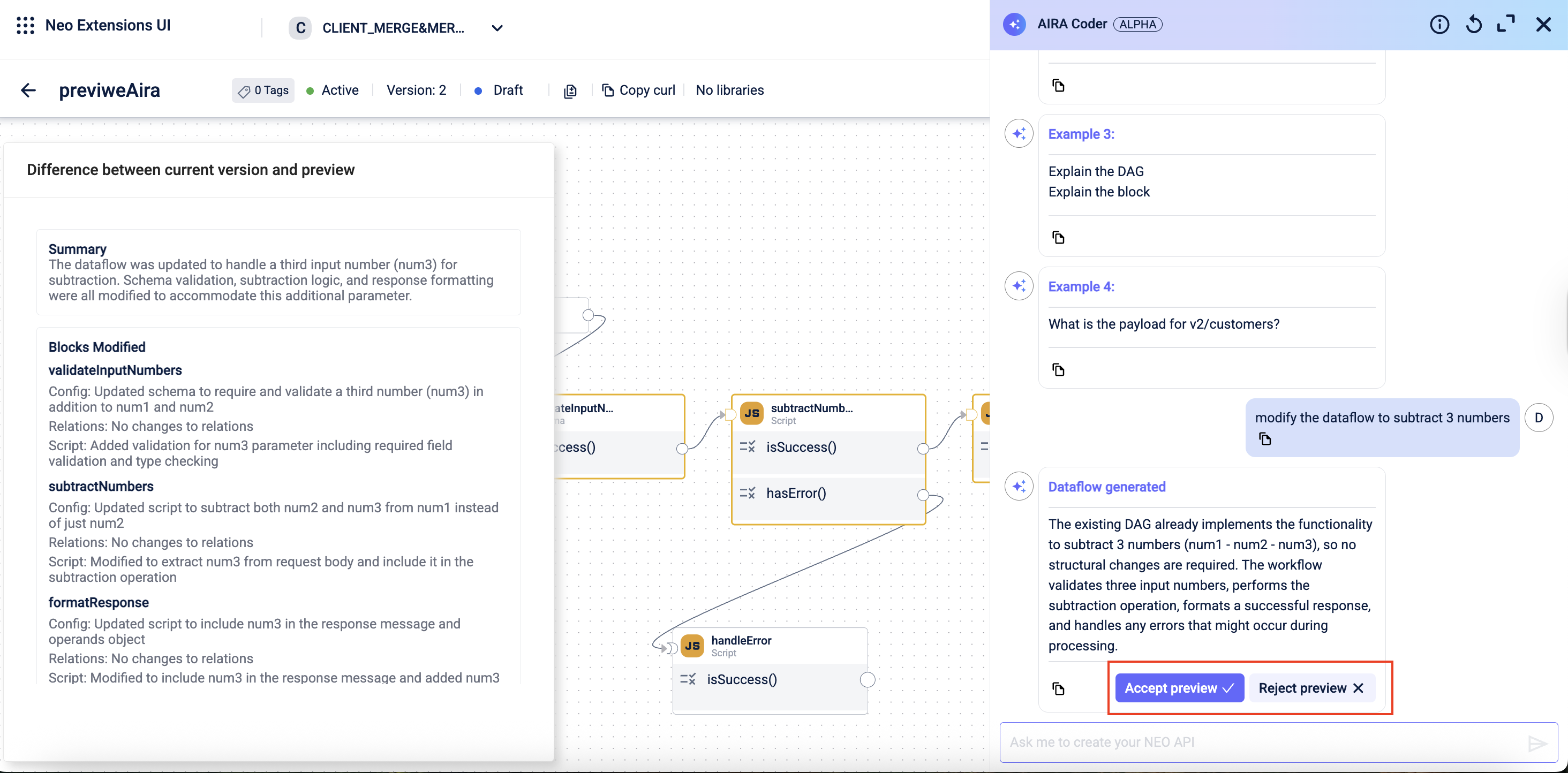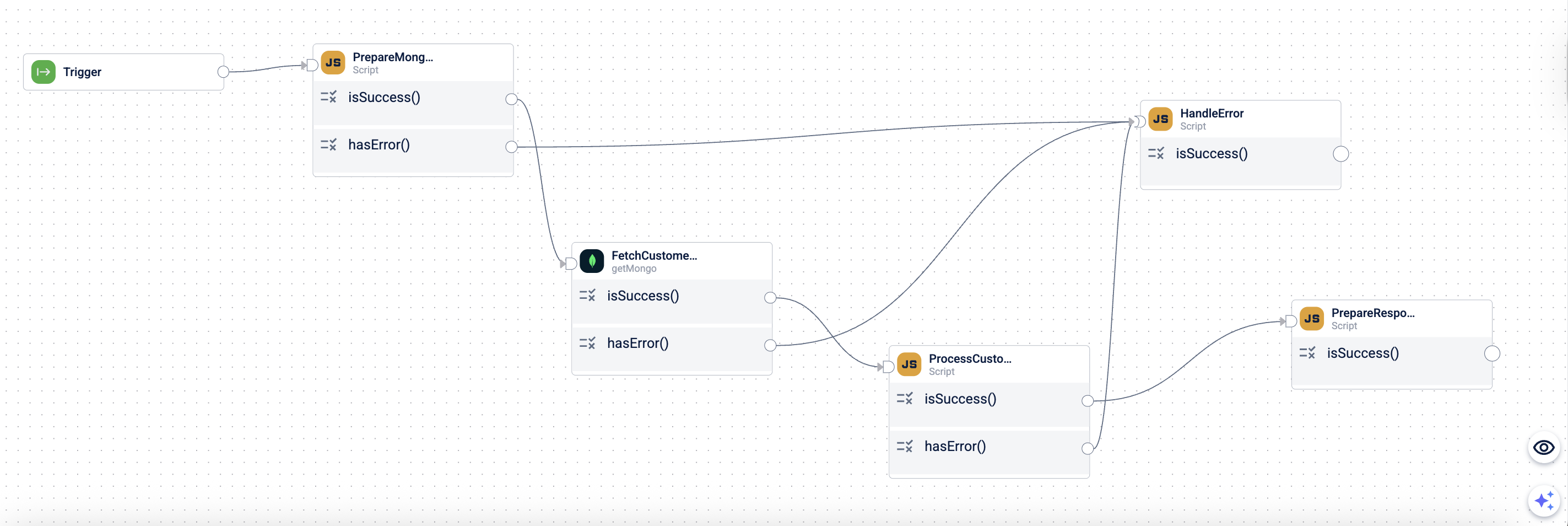Create a Dataflow
With Neo Extensions, you can now generate dataflows using natural language prompts through the built-in AI assistant, Aira Coder. This simplifies the workflow creation process, reducing manual effort and speeding up development. The following are the steps to create a dataflow using Aira coder:
-
From the Aira Coder, enter your prompt describing what you want to build.
- Neo uses Retrieval-Augmented Generation (RAG) to enrich your prompt with context.
- The LLM identifies required building blocks such as Schema, Script, or API blocks.
-
Click the Send icon to submit the prompt.
AIRA returns a proposed dataflow with a step-by-step explanation and a preview. As per the requirement, the coder can also create queries in EJSON format in thegetMongoandputMongoblock. -
To preview the dataflow that is created, click the View Preview icon. The preview option also displays a detailed code difference between the current version and the previous version of the dataflow.

-
Review the changes.
-
Click Close Preview to close the preview without making any changes.
-
To accept or reject changes, open the AIRA Coder modal by clicking AIRA Coder. In the modal, you can:
-
Accept Preview – Save and apply the AI-generated changes.
-
Reject Preview – Discard the AI-generated changes.
-

Testing and Executing the Dataflow
Before execution:
- Update the API URL in the Trigger block
- Save the dataflow
To test and monitor execution, refer to the Execution & Monitoring guide.
Prompting Best Practices
To get the best results from AIRA, follow these tips:
- Use clear and specific language
- Write in full sentences or step-by-step instructions
- Avoid vague prompts like
HiorHelp
Example Prompt 1
Create a dataflow to perform the following:
1. Take input: FFN, Fname, Lname
2. Validate the parameters
3. Fetch customer details
4. Extract names for alias check
5. Perform alias validation**Example Prompt 2 **
Create a dataflow that can search customer details from mongo collection 'customer_info' from date greater than '2025-10-25'Response for prompt 2
The screenshot below shows the dataflow created for the prompt above. Here, in the getMongo block the AIRA coder has generated the query in the EJSON format.


Updated 6 days ago
